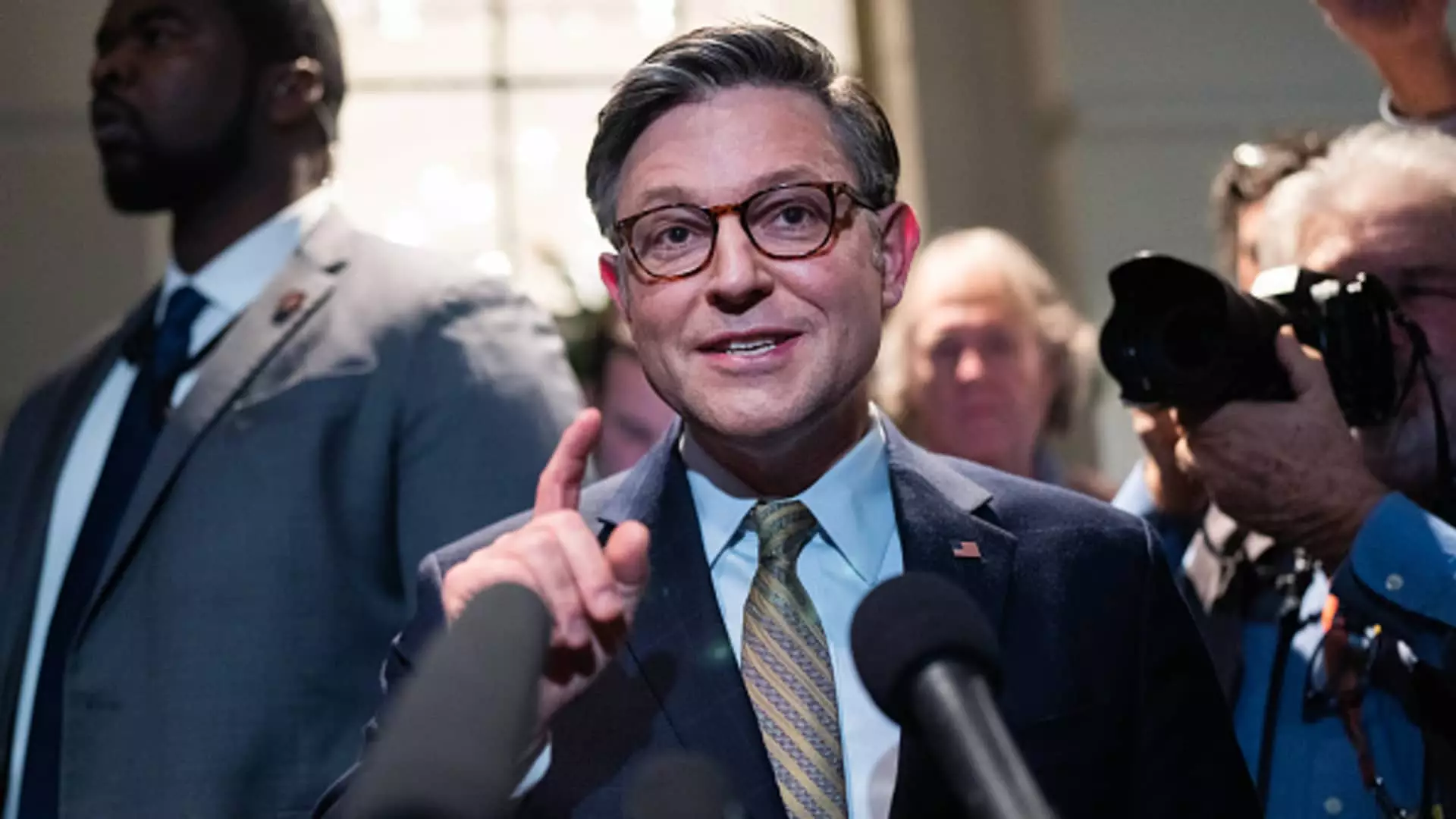In a significant move to prevent a government shutdown, the U.S. House of Representatives passed a crucial federal spending bill on Friday, paving the way for continued government operations amidst a looming midnight deadline. With the impact of a potential shutdown threatening thousands of federal employees, this bipartisan approval highlights both the urgency and complexity of legislative procedures in Washington. However, while the House’s decisive action may suggest resolution, it unveils a deeper narrative about party dynamics, leadership challenges, and the contentious negotiations that often define congressional action.
A Bipartisan Step Forward, Yet Not Without Challenges
The House vote came after intense negotiations and a backdrop of political drama, demonstrating that bipartisan cooperation, although achievable, remains fraught with difficulties. The legislation will sustain government funding at current levels for an additional three months and includes much-needed disaster relief and aid for farmers—a move likely aimed at appeasing various constituencies. Securing a two-thirds majority in the House is no small feat, especially given the intricacies of party lines in contemporary politics. The prominence of Democratic backing indicated a broader consensus to avert a catastrophic shutdown, which could disrupt agencies and delay numerous federal services right before the Christmas holiday.
However, the bill’s real challenge lies ahead in the Senate, where the legislative process can be stymied by any single senator’s wish to debate further or propose amendments. This procedural hurdle reflects the power dynamics at play within the Senate, where individual members can exert considerable control over the passage of legislation. Therefore, while the House’s decisive action showcases bipartisan willingness to work together, the uncertainty surrounding the Senate’s response leaves an air of apprehension regarding the final outcome.
A focal point of contention leading up to this vote revolved around the issue of the U.S. debt limit—a recurring theme in political discussions that often escalates party tensions. Outgoing President Joe Biden’s administration, though supportive of the immediate funding legislation, faced waves of criticism and demands from prominent Republican voices, including President-elect Donald Trump. Trump, alongside some influential figures within the Republican Party, pushed for an incorporation of a two-year suspension of the debt ceiling into the funding bill. This demand complicates matters further, signaling the challenges that the incoming president may face in uniting a fragmented Republican caucus that holds differing views on fiscal policies.
The debt ceiling, a legislative cap on how much the government is authorized to borrow, has been a contentious issue that stirs fierce debate. Many hardline conservatives rally against increasing the borrowing capacity, fearing potential repercussions for economic stability. Such ideological divides within the Republican Party became evident when an earlier, less favorable bill that encompassed both government funding and a debt limit increase was soundly rejected, even with support from some party leaders. This internal dissent underscores the ongoing complexity that the new administration will have to navigate as it attempts to push through its legislative agenda.
As the dust settles on this recent vote, analysts and politicians alike are turning their attention to what lies ahead. Assuming the Senate passes the bill and it reaches Biden’s desk for his signature, a temporary sense of stability may wash over Washington. However, this moment is likely an interlude rather than a resolution to the myriad challenges facing the administration. The turbulence experienced in negotiations leading to this current funding situation diminishes any hope for smooth sailing in the months to come.
The past few days have illuminated not just the immediate need for cooperation but also the underlying fissures within the party systems that could surface again in future legislative battles. House Speaker Johnson’s struggles against the competing agendas of influential party members reflect a broader theme of political leadership vulnerabilities when faced with a divided party. For now, legislators can breathe a sigh of relief as the imperative to keep the government running takes precedence, but the road ahead is rife with potential pitfalls that could once again put the federal government at risk of shutdown.
While this critical vote has temporarily safeguarded the functionality of government in the face of a midnight deadline, it serves as a reminder of the fragility of bipartisan efforts and the complexities wrought by the contentious nature of partisan politics, especially as new leadership steps into the fray with unresolved issues like the debt limit looming in the shadows.


Leave a Reply